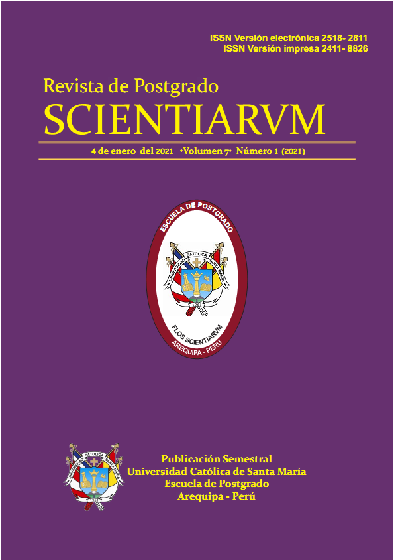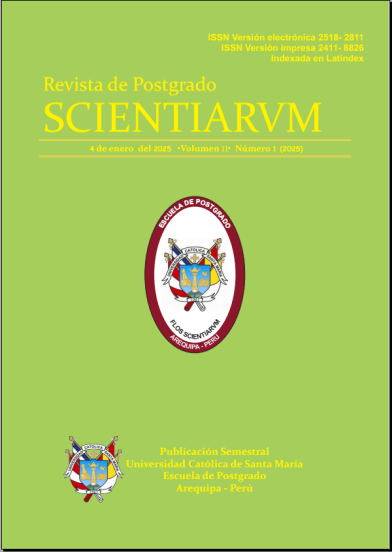MODIFICACIÓN DE LA FORMA DEL EXTREMO DISTAL DEL PELO (PUNTA DEL CABELLO) DEBIDO AL DESGASTE NATURAL Y/O COTIDIANIDAD, HASTA CIEN DÍAS POSTERIORES AL CORTE
MODIFICATION OF THE SHAPE OF THE DISTAL END OF THE HAIR (HAIR TIP) DUE TO NATURAL WEAR AND TEAR AND/OR EVERYDAY LIFE, UP TO 100 DAYS AFTER THE HAIRCUT
Enrique Gutierrez Hancco1, Juan Edson Santos Lovatón1
- Laboratorio de Biología Forense de la Oficina de Criminalística de la División de Investigación Criminal de Arequipa - Policía Nacional del Perú.
RESUMEN: Se evaluaron morfológicamente la punta de los cabellos debido al desgaste natural o por actividades cotidianas (abrasión), de un adulto joven masculino (29 años) raza mestiza (sudamericano). Se tomaron muestras de pelos de la región frontal, vértex, occipital, temporales e infratemporales de la cabeza. Las actividades cotidianas generan un desgaste de la cutícula por diferentes procesos mecánicos y tiene mayor incidencia en el extremo distal del pelo (punta del pelo), para diferenciarlas en función al tiempo se hizo por comparación visual del registro fotográfico día a día, hasta que se observó un desgaste redondeado (romo). El grado de desgaste de la punta del pelo, en el análisis comparativo de muestras coetáneas de pelos con interés forense, puede ser una característica muy relevante a la hora de intentar asociar o excluir muestras dubitadas, con respecto a una fuente de pelos en particular (muestras indubitadas). En esta investigación, a partir de la segunda semana, ya se hizo notorio el estrechamiento y desgaste de las puntas de los pelos, alcanzado una forma completamente redondeada o roma como máximo a las catorce semanas.
Palabras claves: pelo, punta, desgaste, cabeza, temporal, infratemporal, forense, redondeado.
ABSTRACT: The tips of the hair were morphologically evaluated due to natural wear or daily activities (abrasion) from a young adult male (29 years old), mixed race (South American). Five hair samples were taken from the Frontal, Vertex, Occipital, Temporal (right and left) and Infratemporal (right and left) regions of the head. Daily activities generate wear to the cuticle by different mechanical processes and has greater incidence in the distal end of the hair (hair tip), to differentiate them based on time, and it was done by visual comparison with photography record day by day from the previous day until a rounded wear (blunt) was observed. The degree of wear of the hair tip in the comparative analysis of coeval samples of hairs with forensic interest can be a very relevant characteristic when trying to associate or exclude doubtful samples, with respect to a particular hair source. In this investigation, from the second week on, the narrowing and wear of the tips of the hairs became noticeable, reaching a completely rounded or blunt shape at maximum fourteen weeks.
Key words: hair, tip, wear, head, temporal, infratemporal, forensic, rounded
Revista Seleccionada
Enero 2021 Volumen 7 - Número 1 P 39-45
DOI: 10.26696/sci.epg.0129
Enlaces
CIENCIAS SOCIALES Y HUMANIDADES
LIMITACIONES Y PRINCIPALES RETOS DE LA ORALIDAD CIVIL EN EL SISTEMA JUDICIAL PERUANO
LA (IN)DEBIDA REGULACIÓN DE LA TUTELA CAUTELAR EN EL PROCESO DE AMPARO PERUANO
¿ES POSIBLE LA PROTECCIÓN INTERNACIONAL DE LOS DERECHOS DE LOS CONTRIBUYENTES?
CIENCIAS BIOLÓGICAS Y DE SALUD
EPIDEMIOLOGIA DE LA HIPERPLASIA PROSTATICA BENIGNA (BPH)
BACTERIAS ENDOFÍTICAS DE ELODEA POTAMOGETON (“LLACHU”) DEL LAGO TITICACA


